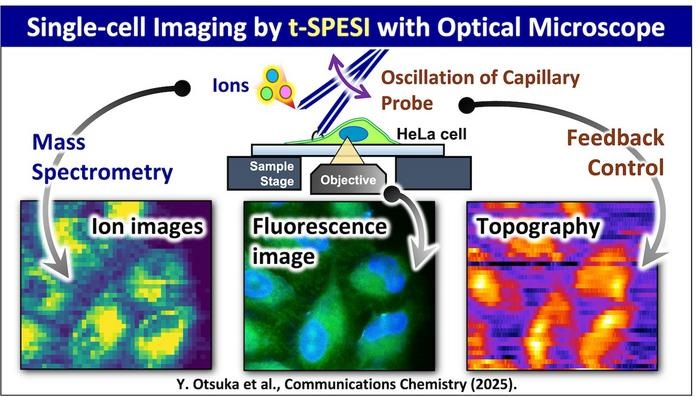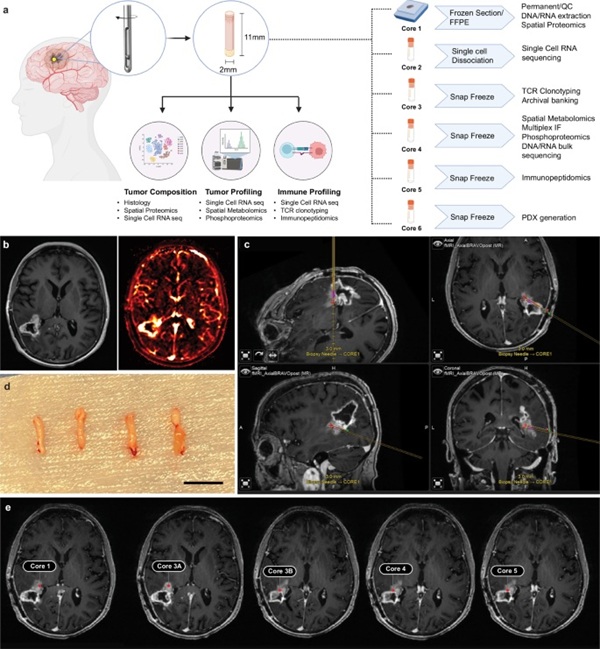Rapid Method Determines Antibiotic Susceptibility
|
By LabMedica International staff writers Posted on 16 Oct 2017 |

Image: The microfluidic device SlipChip is designed to compartmentalize single molecules (Photo courtesy of SlipChip / CalTech).
A novel micro-fluidic device used a sensitive digital real-time loop-mediated isothermal amplification (dLAMP) assay to rapidly determine bacterial antibiotic susceptibility.
Rapid antimicrobial susceptibility testing (AST) is urgently needed to facilitate treatment decisions and prevent the spread of antimicrobial resistance resulting from the misuse and overuse of antibiotics. To date, no phenotypic AST exists that can be performed within a single patient visit (30 minutes) directly from clinical samples.
To correct this lack, investigators at the California Institute of Technology (Palo Alto, CA, USA) designed a rapid (approximately seven minutes), microscale digital real-time loop-mediated isothermal amplification (dLAMP) assay to operate on the SlipChip microfluidic device.
The SlipChip is a microfluidic device manufactured by SlipChip Corporation (Pasadena, CA, USA) to perform multiplexed microfluidic reactions without pumps or valves. The device has two plates in close contact. The bottom plate contains wells preloaded with up to 48 reagents. These wells are covered by the top plate that acts as a lid for the wells with reagents. The device also has a fluidic path, composed of ducts in the bottom plate and wells in the top plate, which is connected only when the top and bottom plate are aligned in a specific configuration. Sample can be added into the fluidic path, filling both wells and ducts. Then, the top plate is "slipped", or moved, relative to the bottom plate so the complementary patterns of wells in both plates overlap, exposing the sample-containing wells of the top plate to the reagent-containing wells of the bottom plate, and enabling diffusion and reactions. Between the two plates, a lubricating layer of fluorocarbon is used to facilitate relative motion of the plates.
The current application used digital nucleic acid quantification to measure the phenotypic response of Escherichia coli present within clinical urine samples exposed to an antibiotic for 15 minutes. To perform the assay, urine samples were diluted and incubated for 15 minutes before dLAMP analysis to calculate ratios of bacterial DNA concentrations between untreated (without antibiotics) and treated (with antibiotics) samples. Ratios below preset thresholds indicated sensitivity to the antibiotics, since treatment reduced bacterial abundance.
The performance of the assay platform was validated by analyzing 51 clinical samples that had been confirmed as containing bacteria that were either susceptible or resistant to one of two commonly used antibiotics (ciprofloxacin or nitrofurantoin).
The SlipChip dLAMP assay was described in detail in the October 4, 2017, online edition of the journal Science Translational Medicine.
Related Links:
California Institute of Technology
Rapid antimicrobial susceptibility testing (AST) is urgently needed to facilitate treatment decisions and prevent the spread of antimicrobial resistance resulting from the misuse and overuse of antibiotics. To date, no phenotypic AST exists that can be performed within a single patient visit (30 minutes) directly from clinical samples.
To correct this lack, investigators at the California Institute of Technology (Palo Alto, CA, USA) designed a rapid (approximately seven minutes), microscale digital real-time loop-mediated isothermal amplification (dLAMP) assay to operate on the SlipChip microfluidic device.
The SlipChip is a microfluidic device manufactured by SlipChip Corporation (Pasadena, CA, USA) to perform multiplexed microfluidic reactions without pumps or valves. The device has two plates in close contact. The bottom plate contains wells preloaded with up to 48 reagents. These wells are covered by the top plate that acts as a lid for the wells with reagents. The device also has a fluidic path, composed of ducts in the bottom plate and wells in the top plate, which is connected only when the top and bottom plate are aligned in a specific configuration. Sample can be added into the fluidic path, filling both wells and ducts. Then, the top plate is "slipped", or moved, relative to the bottom plate so the complementary patterns of wells in both plates overlap, exposing the sample-containing wells of the top plate to the reagent-containing wells of the bottom plate, and enabling diffusion and reactions. Between the two plates, a lubricating layer of fluorocarbon is used to facilitate relative motion of the plates.
The current application used digital nucleic acid quantification to measure the phenotypic response of Escherichia coli present within clinical urine samples exposed to an antibiotic for 15 minutes. To perform the assay, urine samples were diluted and incubated for 15 minutes before dLAMP analysis to calculate ratios of bacterial DNA concentrations between untreated (without antibiotics) and treated (with antibiotics) samples. Ratios below preset thresholds indicated sensitivity to the antibiotics, since treatment reduced bacterial abundance.
The performance of the assay platform was validated by analyzing 51 clinical samples that had been confirmed as containing bacteria that were either susceptible or resistant to one of two commonly used antibiotics (ciprofloxacin or nitrofurantoin).
The SlipChip dLAMP assay was described in detail in the October 4, 2017, online edition of the journal Science Translational Medicine.
Related Links:
California Institute of Technology
Latest Molecular Diagnostics News
- POC Diagnostic Platform Combines Immunoassay and Molecular Testing
- Innovative Test Accurately Evaluates Liver Fibrosis Severity in Just 18 Minutes
- Single Blood Test Could Detect Different Types of Cancer at Early Stages
- POC Oral Swab Test to Increase Chances of Pregnancy in IVF
- Microbial Cell-Free DNA Test Accurately Identifies Pathogens Causing Pneumonia and Other Lung Infections
- Non-Biopsy Approach to Transform Adult Celiac Disease Diagnoses
- Groundbreaking Molecular Diagnostic Test Accurately Diagnoses Major Genetic Cause of COPD
- First-in-Class Diagnostic Blood Test Detects Axial Spondyloarthritis
- New Molecular Label to Help Develop Simpler and Faster Tuberculosis Tests
- Biomarker Discovery Paves Way for Blood Tests to Detect and Treat Osteoarthritis
- Liquid Biopsy Assay Detects Recurrence in CRC Patients Prior to Imaging
- Ultra Fast Synovial Fluid Test Diagnoses Osteoarthritis and Rheumatoid Arthritis In 10 Minutes
- Genetic-Based Tool Predicts Survival Outcomes of Pancreatic Cancer Patients
- Urine Test Diagnoses Early-Stage Prostate Cancer
- New Genetic Tool Analyzes Umbilical Cord Blood to Predict Future Disease
- Spinal Fluid Biomarker for Parkinson’s Disease Offers Early and Accurate Diagnosis
Channels
Clinical Chemistry
view channel
AI-Powered Blood Test Accurately Detects Ovarian Cancer
Ovarian cancer ranks as the fifth leading cause of cancer-related deaths in women, largely due to late-stage diagnoses. Although over 90% of women exhibit symptoms in Stage I, only 20% are diagnosed in... Read more
Automated Decentralized cfDNA NGS Assay Identifies Alterations in Advanced Solid Tumors
Current circulating cell-free DNA (cfDNA) assays are typically centralized, requiring specialized handling and transportation of samples. Introducing a flexible, decentralized sequencing system at the... Read more
Mass Spectrometry Detects Bacteria Without Time-Consuming Isolation and Multiplication
Speed and accuracy are essential when diagnosing diseases. Traditionally, diagnosing bacterial infections involves the labor-intensive process of isolating pathogens and cultivating bacterial cultures,... Read more
First Comprehensive Syphilis Test to Definitively Diagnose Active Infection In 10 Minutes
In the United States, syphilis cases have surged by nearly 80% from 2018 to 2023, with 209,253 cases recorded in the most recent year of data. Syphilis, which can be transmitted sexually or from mother... Read moreHematology
view channel
First Point-of-Care Heparin Monitoring Test Provides Results in Under 15 Minutes
Heparin dosing requires careful management to avoid both bleeding and clotting complications. In high-risk situations like extracorporeal membrane oxygenation (ECMO), mortality rates can reach about 50%,... Read more
New Scoring System Predicts Risk of Developing Cancer from Common Blood Disorder
Clonal cytopenia of undetermined significance (CCUS) is a blood disorder commonly found in older adults, characterized by mutations in blood cells and a low blood count, but without any obvious cause or... Read moreImmunology
view channel
Stem Cell Test Predicts Treatment Outcome for Patients with Platinum-Resistant Ovarian Cancer
Epithelial ovarian cancer frequently responds to chemotherapy initially, but eventually, the tumor develops resistance to the therapy, leading to regrowth. This resistance is partially due to the activation... Read more
Machine Learning-Enabled Blood Test Predicts Immunotherapy Response in Lymphoma Patients
Chimeric antigen receptor (CAR) T-cell therapy has emerged as one of the most promising recent developments in the treatment of blood cancers. However, over half of non-Hodgkin lymphoma (NHL) patients... Read moreMicrobiology
view channel
New Blood Test Detects Up to Five Infectious Diseases at POC
Researchers have developed a prototype flow-through assay capable of detecting up to five different infections, with results that can be quickly analyzed and transmitted via a specialized smartphone app.... Read more
Molecular Stool Test Shows Potential for Diagnosing TB in Adults with HIV
Tuberculosis (TB), caused by the bacterium Mycobacterium tuberculosis, led to 1.25 million deaths in 2023, with 13% of those occurring in people living with HIV. The current primary diagnostic method for... Read morePathology
view channel
New Technology Improves Understanding of Complex Biological Samples
Tissues are composed of a complex mixture of various cell types, which complicates our understanding of their biological roles and the study of diseases. Now, a multi-institutional team of researchers... Read more
Combining Multiple Laboratory Techniques Provides Deeper Insights into Deadly Brain Tumors
Glioblastoma (GBM) is a highly aggressive primary brain cancer that currently has limited effective treatments. Stereotactic needle biopsies are commonly employed for diagnosis; however, their use is restricted... Read more
AI-Based Diagnosis System Identifies Malaria Parasites from Blood Smear Images
Malaria diagnosis has traditionally been performed manually via microscopic examination, a process that is not only time-consuming but also highly dependent on the expertise and accuracy of healthcare providers.... Read moreTechnology
view channel
Advanced Predictive Algorithms Identify Patients Having Undiagnosed Cancer
Two newly developed advanced predictive algorithms leverage a person’s health conditions and basic blood test results to accurately predict the likelihood of having an undiagnosed cancer, including ch... Read more
Light Signature Algorithm to Enable Faster and More Precise Medical Diagnoses
Every material or molecule interacts with light in a unique way, creating a distinct pattern, much like a fingerprint. Optical spectroscopy, which involves shining a laser on a material and observing how... Read more
Disposable Microchip Technology Could Selectively Detect HIV in Whole Blood Samples
As of the end of 2023, approximately 40 million people globally were living with HIV, and around 630,000 individuals died from AIDS-related illnesses that same year. Despite a substantial decline in deaths... Read more
Pain-On-A-Chip Microfluidic Device Determines Types of Chronic Pain from Blood Samples
Chronic pain is a widespread condition that remains difficult to manage, and existing clinical methods for its treatment rely largely on self-reporting, which can be subjective and especially problematic... Read moreIndustry
view channel
Qiagen Acquires NGS Analysis Software Company Genoox
QIAGEN (Venlo, the Netherlands) has signed a definitive agreement to acquire Genoox (Tel Aviv, Israel), a provider of artificial intelligence (AI)-powered software that enables clinical labs to scale and... Read more
Cepheid and Oxford Nanopore Technologies Partner on Advancing Automated Sequencing-Based Solutions
Cepheid (Sunnyvale, CA, USA), a leading molecular diagnostics company, and Oxford Nanopore Technologies (Oxford, UK), the company behind a new generation of sequencing-based molecular analysis technologies,... Read more
Grifols and Tecan’s IBL Collaborate on Advanced Biomarker Panels
Grifols (Barcelona, Spain), one of the world’s leading producers of plasma-derived medicines and innovative diagnostic solutions, is expanding its offer in clinical diagnostics through a strategic partnership... Read more

















